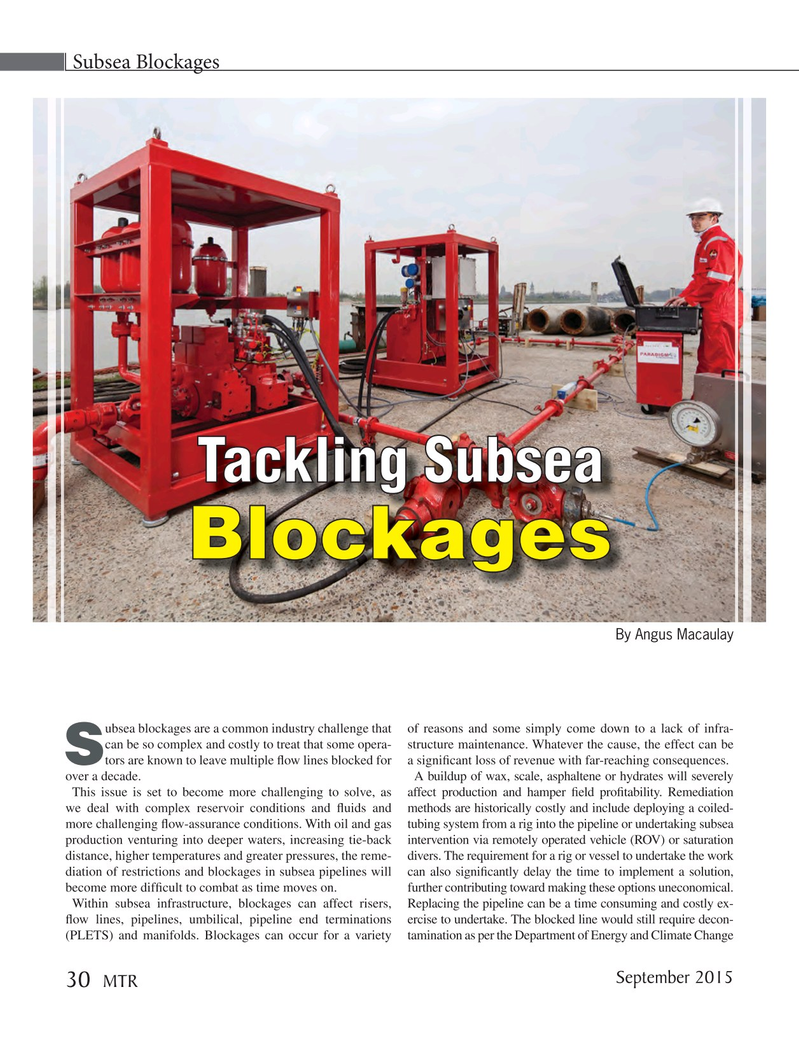
Page 30: of Marine Technology Magazine (September 2015)
Ocean Observation: Gliders, Buoys & Sub-Surface Networks
Read this page in Pdf, Flash or Html5 edition of September 2015 Marine Technology Magazine
Subsea Blockages
Tackling Subsea Tackling Subsea
BlockagesBlockages
By Angus Macaulay ubsea blockages are a common industry challenge that of reasons and some simply come down to a lack of infra- can be so complex and costly to treat that some opera- structure maintenance. Whatever the cause, the effect can be
S tors are known to leave multiple ? ow lines blocked for a signi? cant loss of revenue with far-reaching consequences. over a decade. A buildup of wax, scale, asphaltene or hydrates will severely
This issue is set to become more challenging to solve, as affect production and hamper ? eld pro? tability. Remediation we deal with complex reservoir conditions and ? uids and methods are historically costly and include deploying a coiled- more challenging ? ow-assurance conditions. With oil and gas tubing system from a rig into the pipeline or undertaking subsea production venturing into deeper waters, increasing tie-back intervention via remotely operated vehicle (ROV) or saturation distance, higher temperatures and greater pressures, the reme- divers. The requirement for a rig or vessel to undertake the work diation of restrictions and blockages in subsea pipelines will can also signi? cantly delay the time to implement a solution, become more dif? cult to combat as time moves on. further contributing toward making these options uneconomical.
Within subsea infrastructure, blockages can affect risers, Replacing the pipeline can be a time consuming and costly ex- ? ow lines, pipelines, umbilical, pipeline end terminations ercise to undertake. The blocked line would still require decon- (PLETS) and manifolds. Blockages can occur for a variety tamination as per the Department of Energy and Climate Change
September 2015 30 MTR
MTR #7 (18-33).indd 30 MTR #7 (18-33).indd 30 9/1/2015 10:33:10 AM9/1/2015 10:33:10 AM

 29
29

 31
31
